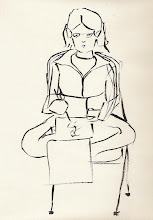

1st grade students were instructed how to draw a birdhouse using crayon before painting their drawings with tempra cakes. Students traced and cut out a bird shape, beak and eyes which they glued together and onto the birdhouse.
Exploring ideas in Elementary Art

































